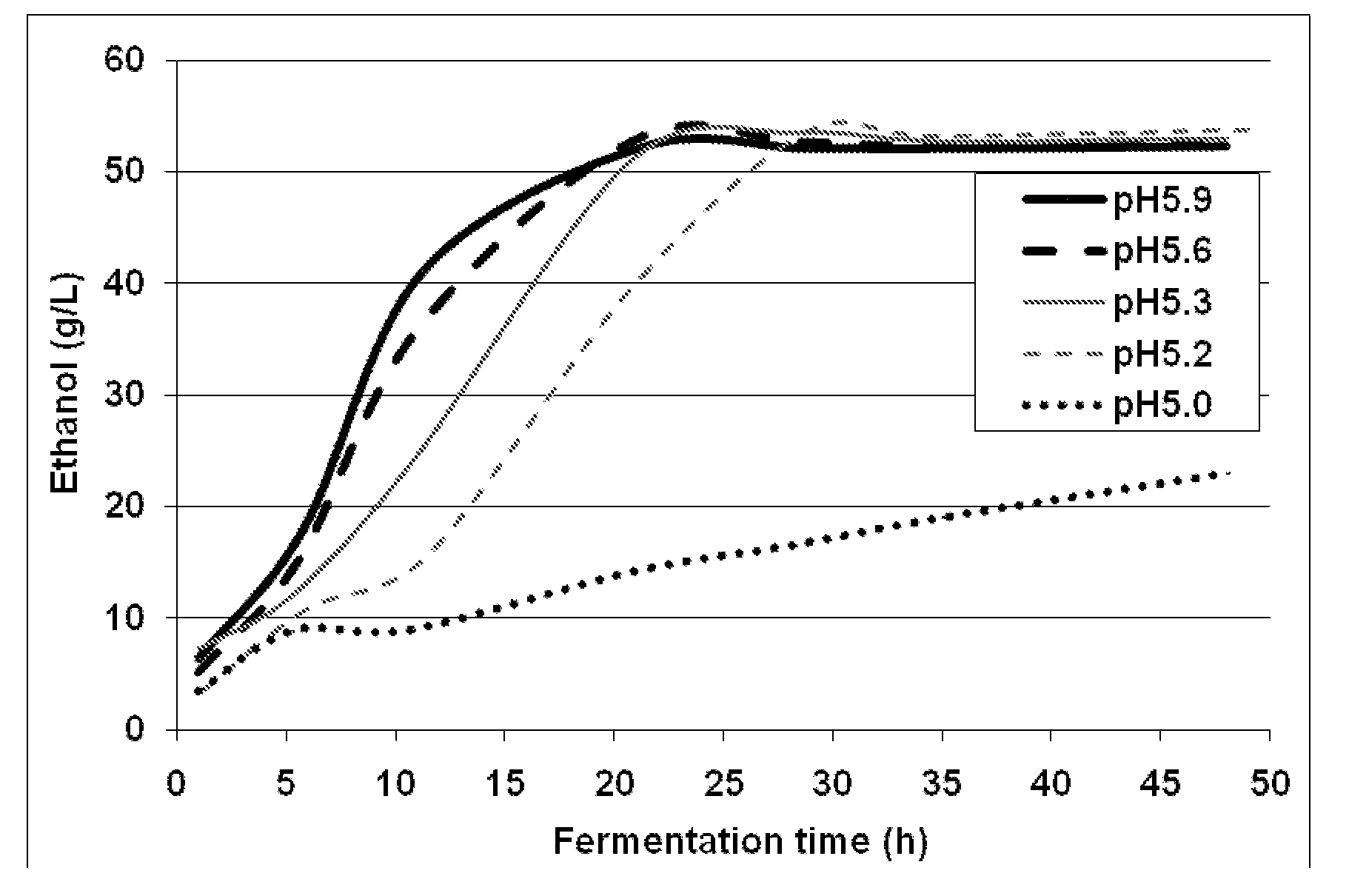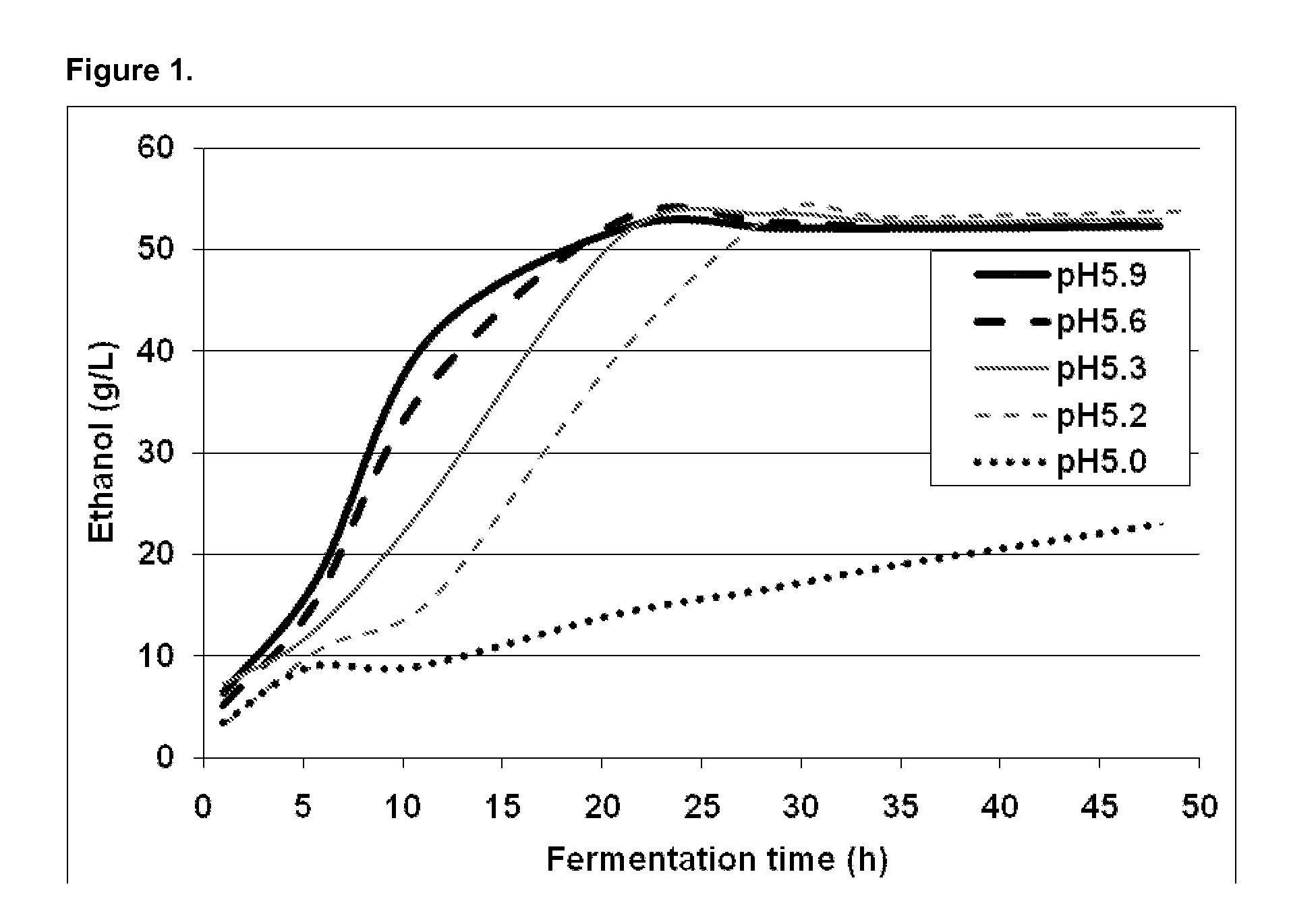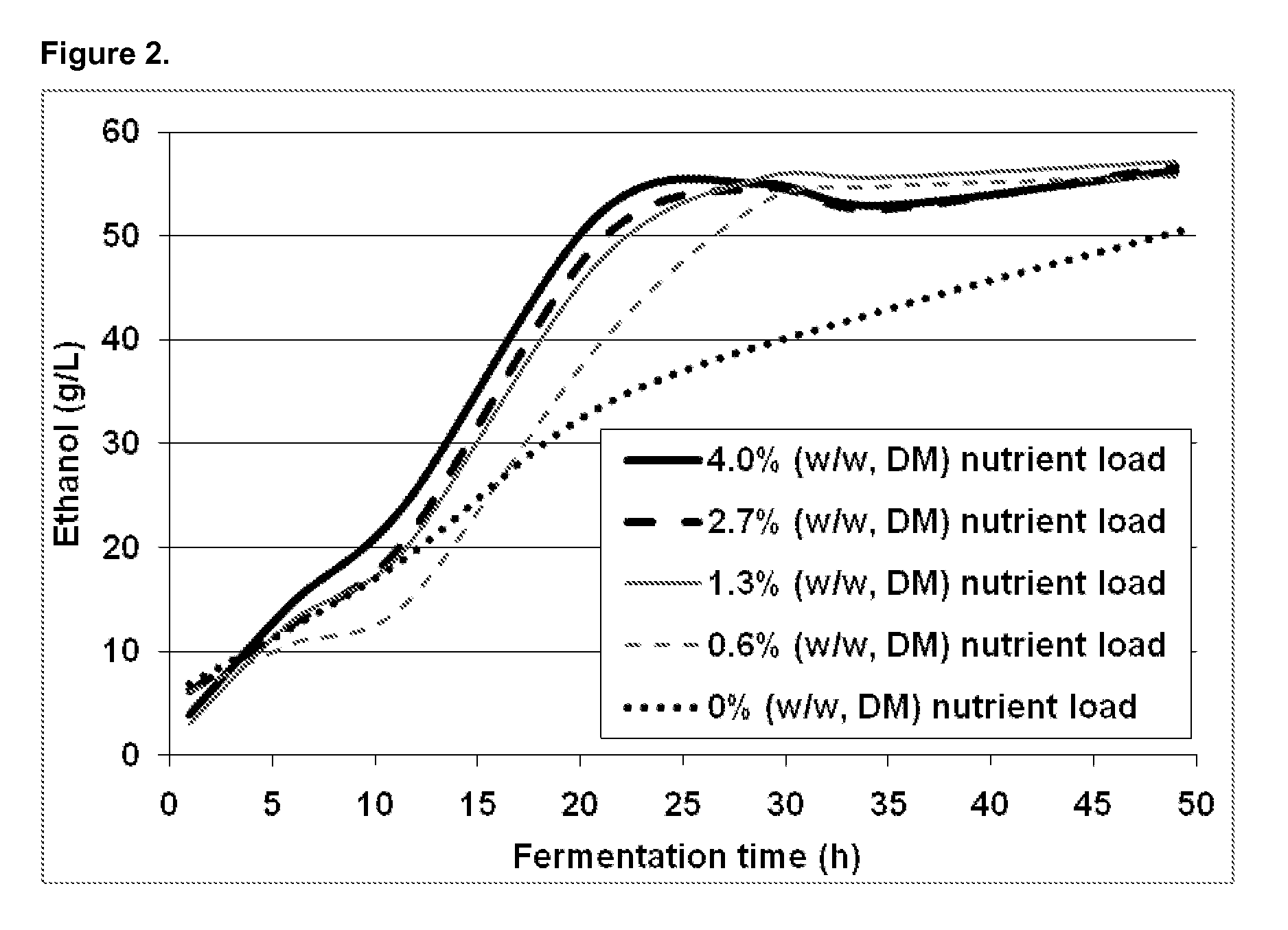Process for alcoholic fermentation of lignocellulosic biomass
a technology of lignocellulosic biomass and alcoholic fermentation, which is applied in the direction of biofuels, fermentation, etc., can solve the problems of reducing the time needed to hydrolyze cellulose polymers to simple sugars, reducing the availability of such feedstocks, and reducing the time needed to hydrolyze cellulose polymers. to simple sugars, and reducing capital and operating costs. , the effect of reducing the cost of capital and operating costs
- Summary
- Abstract
- Description
- Claims
- Application Information
AI Technical Summary
Benefits of technology
Problems solved by technology
Method used
Image
Examples
example 1
[0083]Complete Enzymatic Digestion of Corncob Pre-Hydrolysates was Carried out with a Commercial Enzyme Product GC220 (Genencor) at 3.0% Load (w / w, DM), 50° C., and pH 5.0.
[0084]The preferred enzymatic digestion conditions were found to be 10-30% consistency of the prehydrolysate, a temperature of 40-60° C. and a pH of 4.5-5.5.
[0085]Fermentations were carried out using Ethanol Red™, a commercial industrial grade C6-fermenting yeast from Fermentis (division of Lesaffre group), as a benchmark yeast.
[0086]Yeast inoculation was carried out by adding 6.67 g dry yeast per kilogram of corncob hydrolysates leading to an average yeast population of 108 cells / ml hydrolysate after rehydration.
[0087]The benchmark conditions for the fermentation experiments were 35° C., pH 5.9, using commercial nutrient (Goferm™, 8.3 g / kg corncob hydrolysates or 4.0% (w / w, DM) load). Preferred fermentation conditions were found to be a consistency of 10-30%, a temperature of 30-37° C. and a pH of 5.2 to 5.9.
[008...
example 2
[0103]Batch steam explosion corncob pretreatment was carried out in a steam gun treatment process and experimental cellulose pretreatment setup as described in U.S. Provisional Patent Application No. 61 / 097,692—Cellulose pretreatment process.
[0104]Batch loads of 6 kg DM of 0.5 to 1 cm corncob were used per steam explosion shot. Pressurized saturated steam at temperatures of 190 to 210 degrees C. was fed into the steam gun until the desired cooking pressure was reached. Cooking pressures of 235 psig were used. After a residence time of 8 minutes, the pressure in the steam gun was quickly released. Complete pressure relief was achieved in 600 to 1000 ms. During the residence time and prior to pressure release, condensate and cooking liquids collected at the bottom of the steam gun were purged through purge discharge control. Solids and gaseous reaction products ejected from the steam gun on pressure release were separated in a cyclone separator. The solids collected at the bottom of c...
PUM
 Login to View More
Login to View More Abstract
Description
Claims
Application Information
 Login to View More
Login to View More - R&D
- Intellectual Property
- Life Sciences
- Materials
- Tech Scout
- Unparalleled Data Quality
- Higher Quality Content
- 60% Fewer Hallucinations
Browse by: Latest US Patents, China's latest patents, Technical Efficacy Thesaurus, Application Domain, Technology Topic, Popular Technical Reports.
© 2025 PatSnap. All rights reserved.Legal|Privacy policy|Modern Slavery Act Transparency Statement|Sitemap|About US| Contact US: help@patsnap.com



